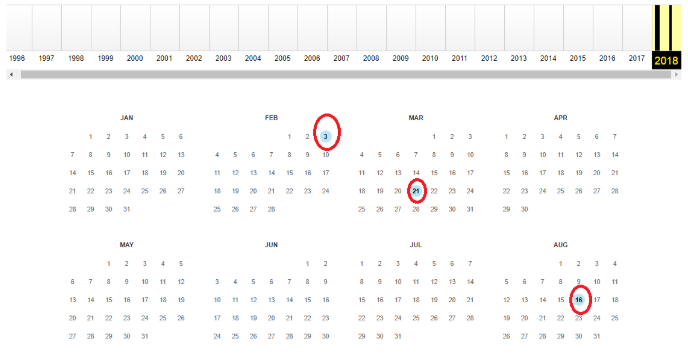Verification of web-pages
Fake information is often disseminated through suspicious websites or based on them. Verification of the credibility of the websites is essential to determine whether the information is reliable or not.
Types of websites used for disseminating fake news
- Cloaked websites - According to J. Daniels, cloaked sites are published by individuals or groups who “conceal authorship in order to disguise deliberately a hidden political agenda". Such websites usually do not reveal their sources and present information as legitimate facts. Ways to identify cloaked websites can be as follows:
- They use the names of well-known media brands with just a slight modification (Foxnews.ge, usa-radio.com, abcnews.com.co, theguardıan.com) in order to ensure legitimacy of the fake content with the help of trusted western media brands; (Case study 1)
- “About us” and “Contact us” sections of pages either do not provide any information at all, or indicated data are so limited that It’s almost impossible to identify who’s behind the certain media outlet. - Websites designed for a temporary purpose – temporary websites are created to ensure more legitimacy of fake content and serve as a deflection source or reference point for tabloid media. Usually such deflection sites used as a primary sources are in English or other western European languages and disappear after a while (e.g, Igliomale.it, humanleather.co.uk, theguardıan.com, usa-radio.com are not accassible shotly after their controversial publications)..
- Satirical-humorous websites as a source of information – Satirical- humorous media outlets publish invented, satiric stories and clearly identify in their mission statements that their publications has nothing to do with reality even characters of their satirical articles are real people. However, tabloid media outlets represent satirical and humoristic articles as authentic facts and never indicate that their source of information is just a fiction.
- Clickbait websites entice users with the sensational, misleading headlines and visual effects (photo, animation). The more clicks they get, the more audience they attract and accordingly, the better chance to increase their income. The number of clickbait websites has grown significantly over last years. The social media makes it possible to multiply hoaxes produced by clickbait sites. Enticing users to click on the misleading headlines to increase audience and monetize the landing page. On the other hand, social networks tend to provide the most frequently clickable information to their users. These reciprocal processes raise the popularity of fake stories and set the framework for misconceptions in a society.
Methods to check credibility of websites
-
Pay attention to the name of domain: Do not trust the websites with the strange address endings, such as ".com.co.", ".Co", etc. For example, CNNNews.com.co, ABCNews.com.ge.
-
Check the mission statement and contact information: Check the "About Us" section of page and contact information. There can be no mention of the editorial staff or any contact information. This makes them more suspicious. Check also the mission statement of publication. Information can be satirical-humoristic and not reflecting the real story, mission statement can be helpful in learning what type of media outlets are the source of information.
-
Refer to open online resources which allow us to get more information about the website registration and/or its owners.
-
Refer to online archives - If the original source of fake news is not accessible anymore, try to find archived data of the website.
Finding the data about the website domain and its registration
Scamadviser.com is an online resource revealing the data about the owners of websites domains, time and location of their registration.
Scamadviser.com provides following information on particular websites::
- Time of domain registration;
- Owner of the website (individual or organization);
- Address of the owner including the country, city, zip code;
- Phone number, e-mail address of the owner.
It should be noted that the information about the owners of the websites often is not public. Scamadviser.com shows only the data that is publicly entered by the owner while registering the website.
Whois.domaintools.com is another open resource providing data on website registration:
Whois.domaintools.com provides the information about the website registration time, location, owner and other technical details, which can be of interest to us while checking the credibility. This resource, similarly to scamadviser.com, reveals only the public data. We can come across the cases when the registration data are protected.
Public information about the owners of Georgian websites registered at GE-domain can be found on Registrator.ge.
We can simply visit www.registrator.ge, enter the address of particular website into the search box and select the domain type (ge; edu.ge; com.ge; org.ge; net.ge).
When we check already existing website, system shows us that the domain name is already taken and provides public information about the registration time, owner and administrator.
Retrieving the archived data and how to archive the data
Archive.is. Archive.is. is such kind of resource and it’s useful as to archive data as for searching for archived data.

Internet Archive Wayback Machine - works since 1996 and beside the webpages its archive includes other digital data, like photos, videos, audio and text material. We enter the webpage address of our interest in a search box of www.web.archive.org and search for the archived material pressing the Browse History button.
Search results are sorted by date.
In order to archive the material, we have to enter the address of the information (url) which we want to be archived in a field shown below and then to press the Save Page button. (Case Study 2)








